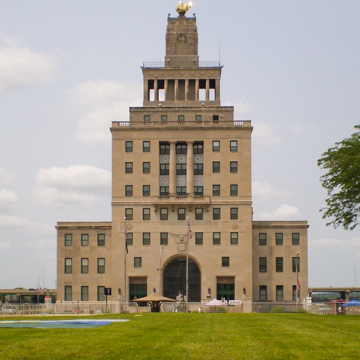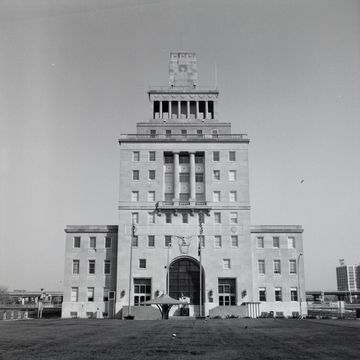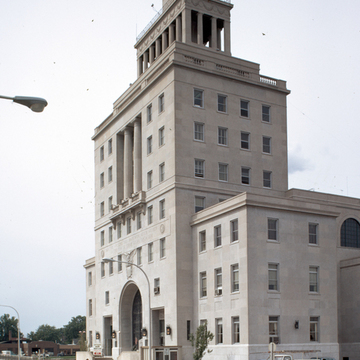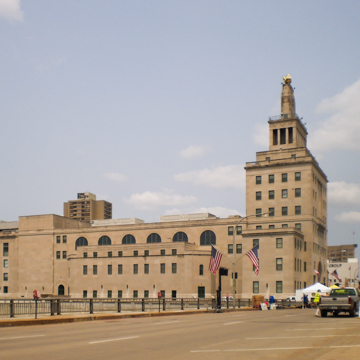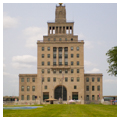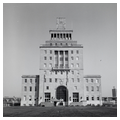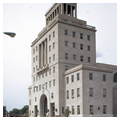The idea of symbolizing government by playing off the theme of the skyscraper, associated with laissez-faire business, against the public image of the classical temple was introduced on the American architectural scene in the second decade of this century. Its earliest complete manifestation was the Oakland (California) City Hall (1911–1914) designed by the New Yorker Henry Hornbostel. In Iowa this theme underlay the Prairie-school design of William Steele and Purcell and Elmslie's Woodbury County Courthouse at Sioux City (1915–1917). And it was, of course, in the twenties that the most famed version was created—Bertram G. Goodhue's Nebraska State Capitol building at Lincoln (1922–1926).
Cedar Rapids engaged Hornbostel for its towered Veterans' Memorial and City Hall. Along with the Iowa architect William Jay Brown, he produced an intriguing variation on the theme, placing the tower at the front, as a frontispiece, with the lower three-story building serving as a backdrop. Equally inventive was their treatment of the termination of the building, where a solid masonry cenotaph surges up through and then above a small, delicately detailed classical temple. The building, which was designed to be theatrically floodlighted at night, contains a spectacular stained glass window, designed by Grant Wood early in his career.

